By Jeffrey Nelson, DO, FACOOG
 There are a multitude of factors contributing to a couple’s inability to conceive, including male factor, uterine factor, tubal factor, pelvic factor, and ovulatory dysfunction. The majority of these factors can be circumvented through the application of advanced reproductive treatments like in-vitro fertilization (IVF). The success of IVF depends on three primary components: good quality embryos, a technically uncomplicated embryo transfer, and a receptive intrauterine environment for embryo implantation. When we talk about “good quality embryos” the two most common criteria discussed are rate of embryo growth, and embryo grade. The rate of embryo growth is determined by the number of cells, or blastomeres, contained within the embryo on a specific day of development. For example, on the third day following egg collection and insemination, an appropriately developing embryo should consist of six to eight cells. It is believed that embryos growing at a slower rate have
There are a multitude of factors contributing to a couple’s inability to conceive, including male factor, uterine factor, tubal factor, pelvic factor, and ovulatory dysfunction. The majority of these factors can be circumvented through the application of advanced reproductive treatments like in-vitro fertilization (IVF). The success of IVF depends on three primary components: good quality embryos, a technically uncomplicated embryo transfer, and a receptive intrauterine environment for embryo implantation. When we talk about “good quality embryos” the two most common criteria discussed are rate of embryo growth, and embryo grade. The rate of embryo growth is determined by the number of cells, or blastomeres, contained within the embryo on a specific day of development. For example, on the third day following egg collection and insemination, an appropriately developing embryo should consist of six to eight cells. It is believed that embryos growing at a slower rate have
a less favorable chance of implantation. The grade of the embryo is determined by the appearance of the individual blastomeres. A high-grade embryo contains blastomeres that are symmetrical in size and shape, without evidence of intracellular fragmentation. Conversely, embryos made up of asymmetrical cells with a significant degree of fragmentation, are less likely to successfully initiate a pregnancy.
There is another critically important component of the embryo that does not get as much attention. This important structural component is the elastic outer shell, which surrounds the embryo, known as the zona pellucida (ZP). The ZP is formed from a matrix of various proteins that are secreted by the egg, and in photographs appears as a translucent halo enveloping the embryo. The ZP has several important functions. During the process of fertilization, it serves to prevent the access of more than one sperm to the egg. Following fertilization, the ZP keeps the cells of the embryo together during early development, until the embryo reaches the blastocyst stage. At the blastocyst stage, the embryo has enough structural integrity that it no longer needs the protection of the ZP. In fact, it is mandatory that the blastocyst break free of the ZP, once it is in the uterine cavity, in order to successfully implant within the uterine wall.This eventual escape from the ZP by the expanding blastocyst is called
embryo hatching.
Standard IVF protocols include culturing of embryos within the laboratory for three days, followed by transfer of cleavage stage embryos (6 to 8 cells), on Day 3, to the uterine cavity. Following transfer, the embryos must continue to progress to the blastocyst stage, shed the ZP, and embed into the uterine wall. In 1989 Cohen and his co-investigators observed a higher implantation rate in patients undergoing IVF, who had the ZP of their embryos mechanically opened. They therefore hypothesized that artificially creating a gap in the ZP might serve to facilitate embryo hatching and implantation. Microscopic manipulation of the ZP, in order to augment hatching and implantation, subsequently became known as “assisted hatching”. Prospective randomized clinical studies have been performed in order to evaluate the effectiveness of assisted hatching. Several studies report a significant increase in embryo implantation and clinical pregnancy rates, in select groups of patients whose embryos have undergone this procedure. These select patient groups include women greater than 38 years of age, those with elevated Day 3 FSH levels, couples with previous IVF failures, embryos with an abnormal appearing zona pellucida, and when using previously cryopreserved embryos. Some IVF programs will globally perform assisted hatching on all embryos prior to transfer, but the data on this are less clear.
A variety of techniques have been employed to perform assisted hatching. These techniques are designed to assist the embryo in the timely shedding of the ZP, and they share a common endpoint of either thinning out or completely perforating a focal area of this surrounding membrane. Some embryologists will perform assisted hatching by mechanically piercing the ZP with a specifically designed sharp pipette. Currently, the most commonly practiced method of assisted hatching involves exposure of the embryo to an acidified media called acidified tyrode’s solution. This acidic solution is microscopically applied to a focal area of the ZP to induce thinning. Complications and consequent diminished pregnancy rates can result from assisted hatching if the embryo is damaged, or if the size of the defect in the ZP is not precise. When the defect is too small, the embryo may get pinched and damaged. When the hole in the ZP is too large, the embryo may escape prematurely which will compromise its development. The described techniques therefore require a highly skilled and experienced embryologist, in order to be performed in a way that is beneficial and not detrimental to the health and viability of the embryo.
A new technique for assisted hatching has been introduced, which we now routinely use at HRC Fertility. This technique involves the creation of a precise gap in the ZP of selected embryos using a 1.48 micron infrared diode laser. This specifically designed laser system includes the laser, which serves as the energy source to create an opening in the ZP, and a computer which allows the operator to precisely control the laser energy output, laser pulse duration, and gap size. This system has many benefits when compared to the more standard mechanical and acidified tyrode’s techniques. The computer assisted laser method is more precise, resulting in a more consistent ZP opening. This technique is also more quickly mastered by the embryologist, with a quality outcome less dependent on the skill and experience of the technician. Laser assisted hatching takes less time and does not expose the embryos to potentially adverse chemicals, so embryos spend less time out of
optimal culture conditions. It also requires significantly less physical manipulation of the embryos. The cumulative effect of these factors is to minimize the stress placed upon the embryo during the performance of assisted hatching. This in turn should then translate into improved implantation and pregnancy rates. We have completed a limited study at our center, which confirmed the laser is safe, and was associated with excellent implantation and pregnancy rates. Assisted hatching has demonstrated the potential for improving embryo implantation rates, and clinical pregnancy rates in select patient groups undergoing IVF. Infertile couples considering advanced assisted reproductive treatments should consult with their reproductive specialist regarding their candidacy for assisted hatching.
Reference
- Practice Committee of Society for Assisted Reproductive Technology (2008) The role of assisted hatching in in vitro fertilization: a
review of the literature. A Committee opinion. Fertil Steril 90(5 Suppl):S196-8. - Blessmann-Roset J, Rives N, Clavier B, Milazzo JP, Mazurier S, Mousset-Simeon N, Mace B (2009) Laser assisted hatching: Rouen
University Hospital outcomes Gynecol Obstet Fertil 37(4):313-20. - Cohen J, Inge KL, Suzmann M (1989) Video-cinematography of fresh and cryopreserved embryos: a retrospective analysis of embryonic
morphology and implantation. Fertil Steril 51:820-7. - Cohen J, Elsner C, Korth H et al (1990) Impairment of the hatching process following IVF in the human and improvement of implantation
by assisting hatching using micromanipulation. Hum Reprod 5:7-13.

